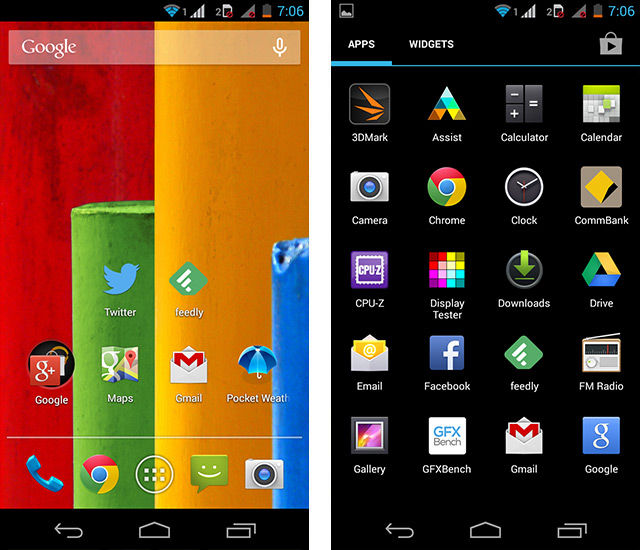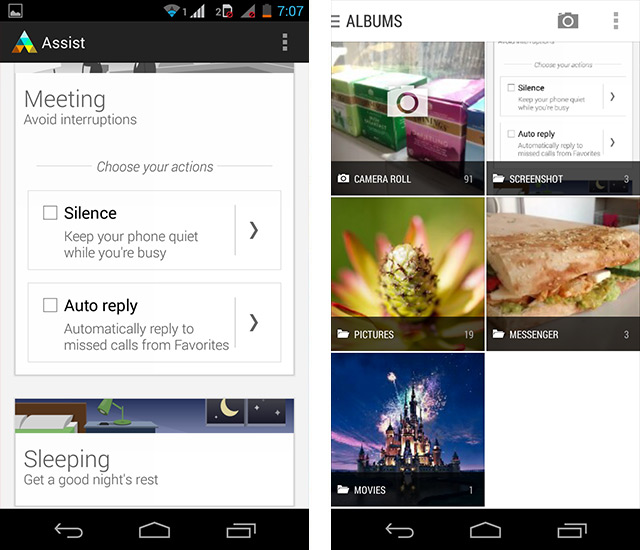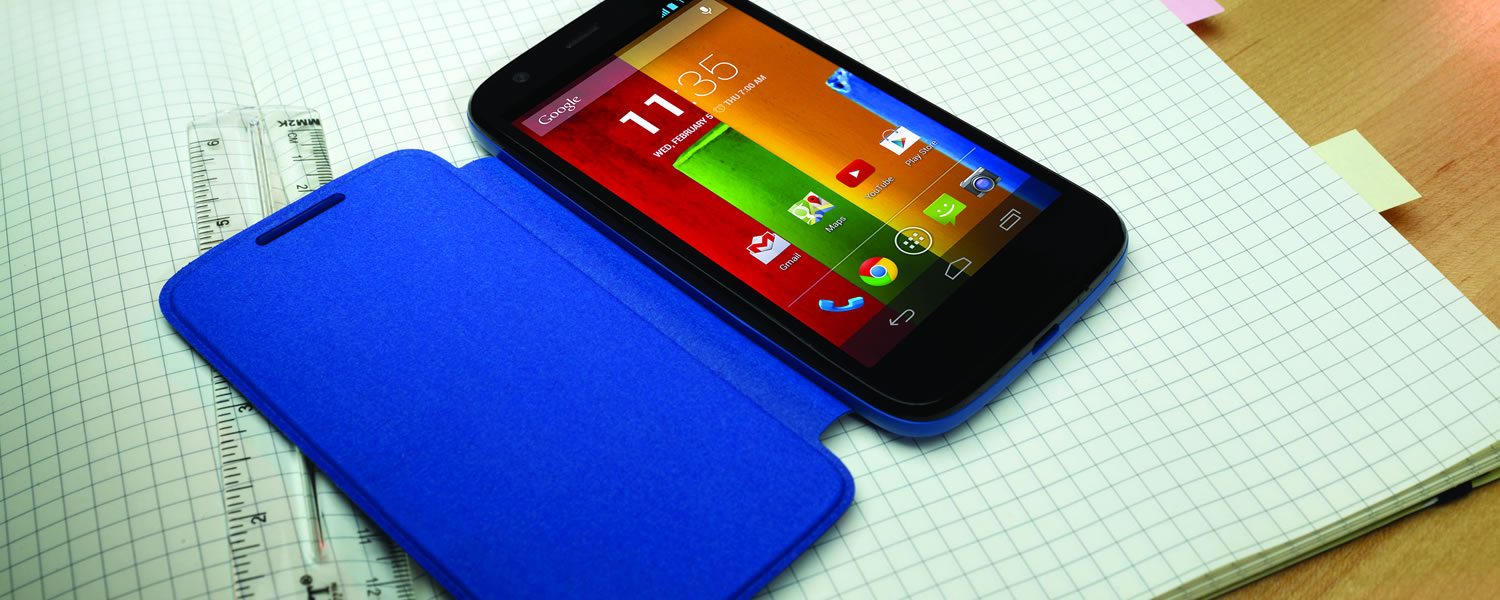Software, Camera
Until very recently Motorola was a Google company, and although the two were largely separate entities, Motorola's past devices have come with few changes to stock Android. Out of the box, the Moto G I tested came with Android 4.3, and I know there's an Android 4.4.2 update floating around though unfortunately it hasn't reached my device yet.

Stock Android on this type of device has a number of benefits: less bloatware means better performance and battery life, Google's design language looks great, and the overall user experience is generally quite good from vanilla installations. Of course, by going with stock Android, you miss out on some cool features that some OEM skins do bring to the table, but I'm not going to complain too much, because most skins are far too heavy.
Unfortunately touchless control, which is a major selling point of the Moto X, isn't included on the Moto G because it would consume too many resources. Neither is the Google Experience Launcher in the Android 4.4.2 update, nor the improved Caller ID Dialer that we saw in the Nexus 5.

What is included is a custom camera application that replaces the terrible stock Android one, and an app called Assist. I was really hoping this application would be an upgrade to Smart Actions, an app that was a major feature on past Motorola devices like the Razr HD, but it doesn't quite deliver the customizability we had in the past. However it does provide useful functionality, being able to mute your device during the night, and also when in meetings as dictated by your calendar.
Apart from these few additions, there's not much else to talk about on the software front. If you're after a stock Android experience on an entry-level device, the Moto G may be the smartphone you're looking for.
Camera
On the back of the Motorola Moto G just slightly above an LED flash we have the 5-megapixel rear camera which is the primary point of call for photography on the handset. The sensor is Aptina's AR0543 1/4" CMOS with a pixel size of 1.4 μm, paired with a 37mm (effective) f/2.4 lens unit. On the front you also get an Aptina camera module, although this one is just 1.3-megapixels with 1.9 μm pixels.
In good conditions, image quality from the rear camera is surprisingly decent. Overall color saturation and contrast isn't quite in the same league as the top smartphone sensors, and white balance can be inaccurate, but for what it's worth the Moto G can take a good shot (especially in scenes dominated with greenery). Dynamic range is average, but this can be boosted significantly by a fantastic HDR mode that excels at bringing detail out of the shadows.
The sensor only captures 5-megapixel images, so there's isn't a great deal of room to crop or downscale your photos. Looking at 100% crops reveals acceptable sharpness at low ISOs, with some artefacts that largely disappear when you downscale. Bokeh is predictably atrocious, and the camera can struggle to find the right focus point for macro-style images (even when you're using the manual spot metering/focus point), but this isn't a huge concern.
It's actually good to see Motorola implementing a spot metering mode, where you can drag around a circle over the image preview to have the camera adjust and focus to that spot accordingly. I tend to prefer a good matrix metering system, but the spot mode does the job most of the time, especially where you want to make adjustments. It's also great to see a true 4:3 camera preview when you switch from 16:9 to utilize the full sensor size.
Indoors is where the Moto G's camera struggles. During my testing I took a lot of substandard shots in moderate lighting, many of which were blurry thanks to no stabilization features and long shutter speeds. Color accuracy and saturation quickly falls away, and automatic exposure often goes crazy trying to find the right settings and white balance to use. Shooting at a higher ISO will also produce more artefacts, which are often visible even in a downscaled image.
Night-time photography is not a strong suit for the Moto G's camera either. The sensor's pixel size is reasonable, but the overall area occupied by the module, plus a mediocre aperture, makes night-time images generally terrible unless you use a flash.
The Moto G tops out at 720p video recording at 30 frames per second and 10 Mbps. Video quality is quite good, as good as you'll get from still shots in whatever conditions you're recording in, but the software stabilization option appears quite weak. Luckily, the camera is capable of quick exposure changes and autofocus, plus slow-motion recording sweetens the deal.
I wouldn't describe the Moto G's camera as terrible, nor would I describe it as fantastic. In good outdoor lighting it's possible to get some half-decent shots, but it struggles most of the time while indoors. Of course, no-one ever expects a fantastic camera experience on an entry-level smartphone, and the Moto G's shooter will likely be fine for those who use their phone for the occasional quick shoot.













